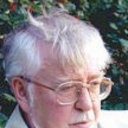Neuroprotective Effects of Mitochondria-Targeted Plastoquinone and Thymoquinone in a Rat Model of Brain Ischemia/Reperfusion Injury.
الكلمات الدالة
نبذة مختصرة
We explored the neuroprotective properties of natural plant-derived antioxidants plastoquinone and thymoquinone (2-demethylplastoquinone derivative) modified to be specifically accumulated in mitochondria. The modification was performed through chemical conjugation of the quinones with penetrating cations: Rhodamine 19 or tetraphenylphosphonium. Neuroprotective properties were evaluated in a model of middle cerebral artery occlusion. We demonstrate that the mitochondria-targeted compounds, introduced immediately after reperfusion, possess various neuroprotective potencies as judged by the lower brain damage and higher neurological status. Plastoquinone derivatives conjugated with rhodamine were the most efficient, and the least efficiency was shown by antioxidants conjugated with tetraphenylphosphonium. Antioxidants were administered intraperitoneally or intranasally with the latter demonstrating a high level of penetration into the brain tissue. The therapeutic effects of both ways of administration were similar. Long-term administration of antioxidants in low doses reduced the neurological deficit, but had no effect on the volume of brain damage. At present, cationic decylrhodamine derivatives of plastoquinone appear to be the most promising anti-ischemic mitochondria-targeted drugs of the quinone family. We suggest these antioxidants could be potentially used for a stroke treatment.


